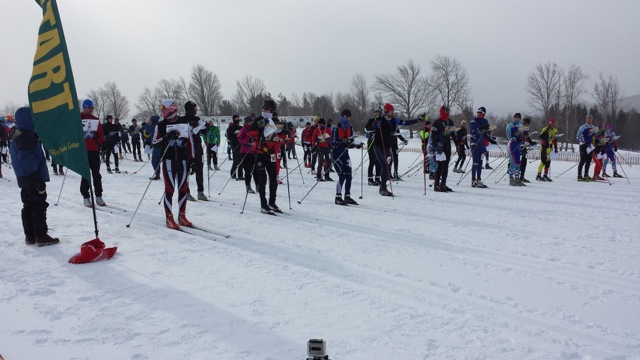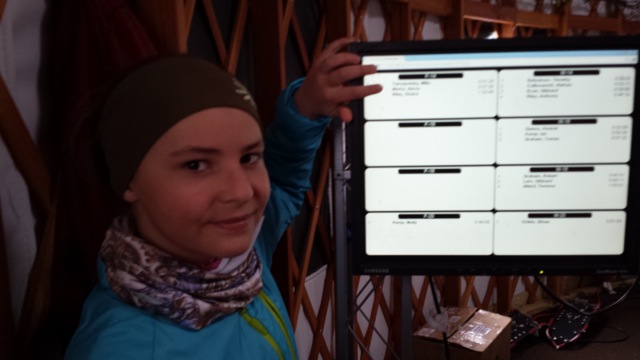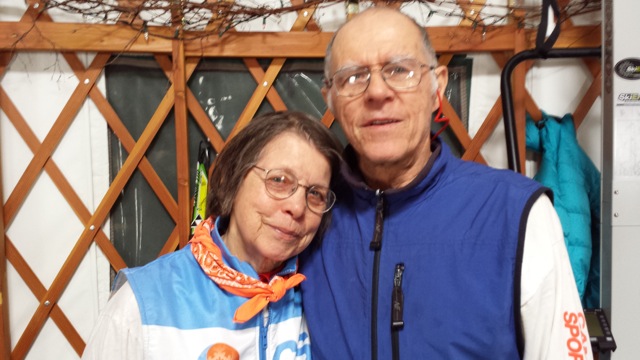
“This is the world of Ski Orienteering, one of the more obscure and mentally challenging Nordic ski racing disciplines.”
STOWE, Vt. — Imagine a Nordic ski race where you cannot preview the course, don’t know where you will be going, how long you will be skiing or how many hills you will have to climb. A race where you can go anywhere you want on skis, including down snowshoe trails or through uncharted glades. Where you can even take off your skies and run with them. This is the world of Ski Orienteering, one of the more obscure and mentally challenging Nordic ski racing disciplines.
The U.S. Ski Orienteering National Championships, a biennial event, were held this past weekend at the Trapp Family Lodge Ski Center in Stowe, Vt. Approximately 100 skiers, ranging in age from 10 to nearly 80 attended the three-day competition, featuring a Sprint and Middle Distance race (with individual starts) and a Long Distance race with a mass start. Different age classes are on different courses, with varying technical and physical difficulty.
Skiers received the map 15 seconds before the start, and were required to find the correct controls (those orange-and-white fabric markers you might see in the woods) in the right order, registering electronically at each one with a timing chip carried on their finger. At the end of the race, skiers download that information and are given their split times to each control.

In the mass start, the courses were “forked,” meaning skiers ultimately skied the same distances and climbs, but not necessarily in the same order as their competitors, in order to prevent following. Race designers set up the courses to specifically challenge skiers on route choices, forcing them to decide, for example, whether it is faster to stay on a large trail or to follow a narrow trail only groomed by a snowmobile. The courses also challenge skiers to maintain contact with their maps, and to not become upset by climbing up and skiing down a hillside a couple of times.
Alexis Merka, age 10, was the youngest competitor at the event. She is from Maryland, and her mother and father are both orienteers. She competes in both ski-O and foot-O (which involves running rather than skiing). When asked what happens when she gets lost, she said “I say to myself, don’t panic, stay calm, look at the map.”
Larry Berman, who with his wife Sara Mae Berman started the Cambridge Sports Union and has been involved with ski orienteering since the early 1970s, said that he loves the challenge of finding that control right where it is suppose to be based on the map … and if the control is not there, clearly the map is wrong.
“I say to myself, don’t panic, stay calm, look at the map.” — Alexis Merka, 10, youngest racer at 2014 U.S. Ski Orienteering National Championships
For male and female skiers in the elite classes, the U.S. National Championships also identify those skiers who may be named to the USA National Ski Orienteering Team, qualifying them to go to World Events. The top U.S. female skiers were Alison Crocker (1st), Alexandra Jospe (2nd) and Anna Voegele (3rd). Top U.S. male skiers were Adrian Owens (1st), Greg Walker (2nd) and William Frielinghaus (3rd for Middle and Long Distance) and Ari Ofsevit (3rd Sprint). For full results go to: http://www.neskio.com/results/
Results: Sprint | Middle distance | Long distance




